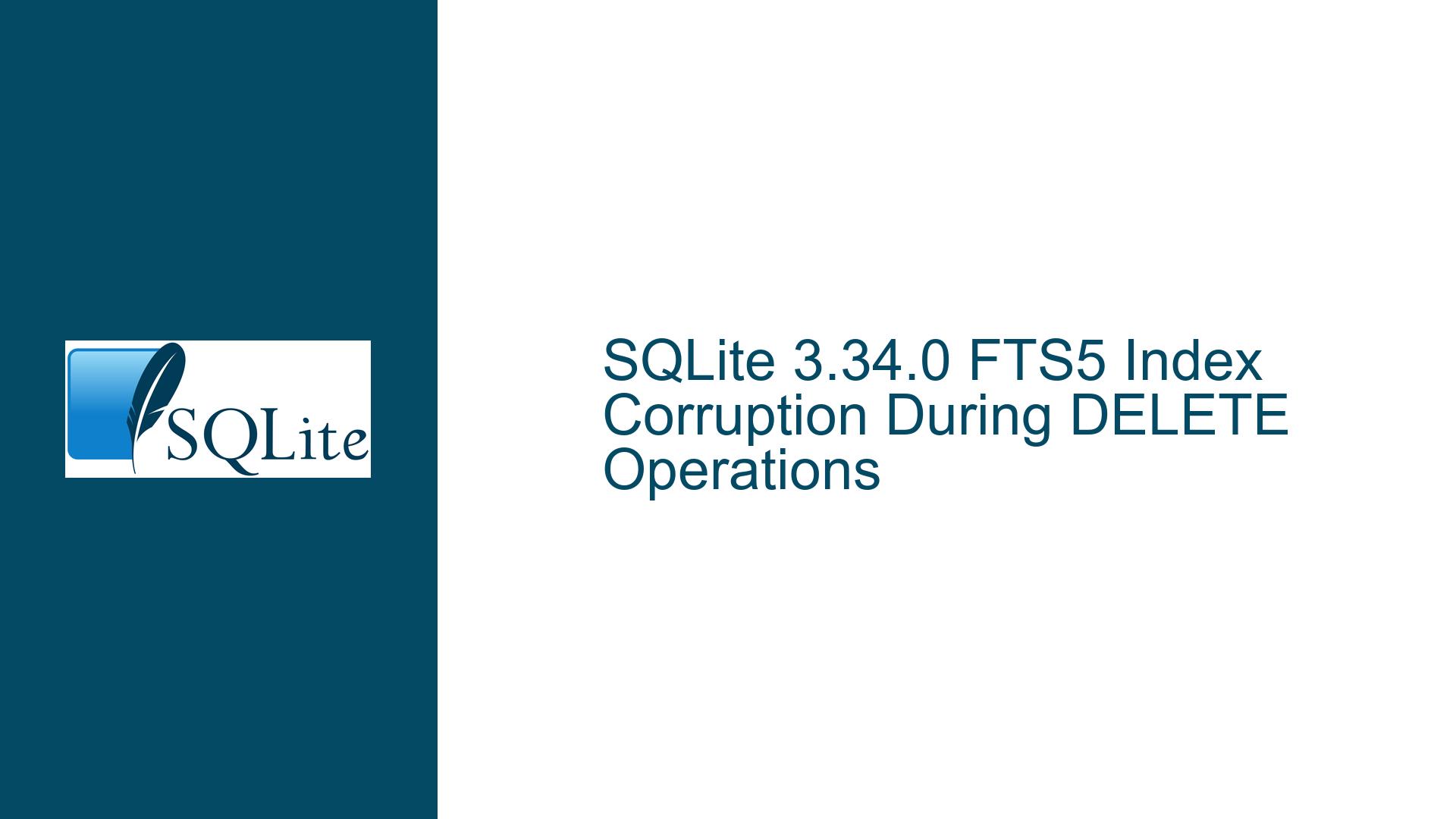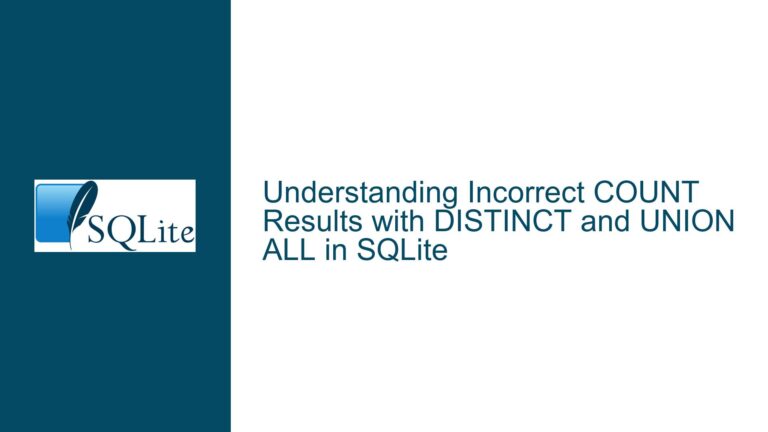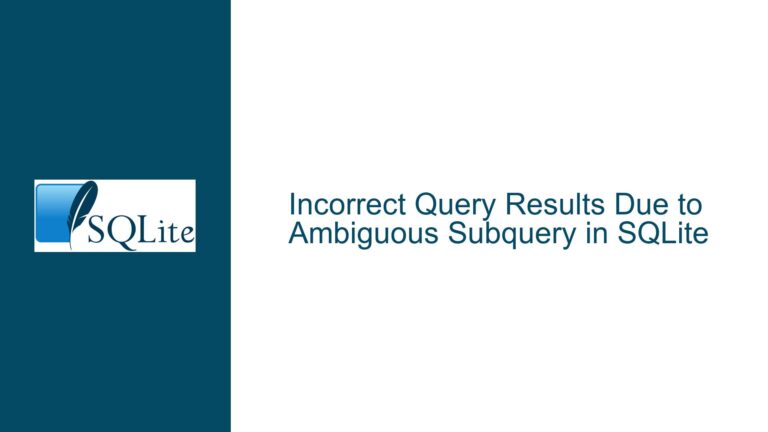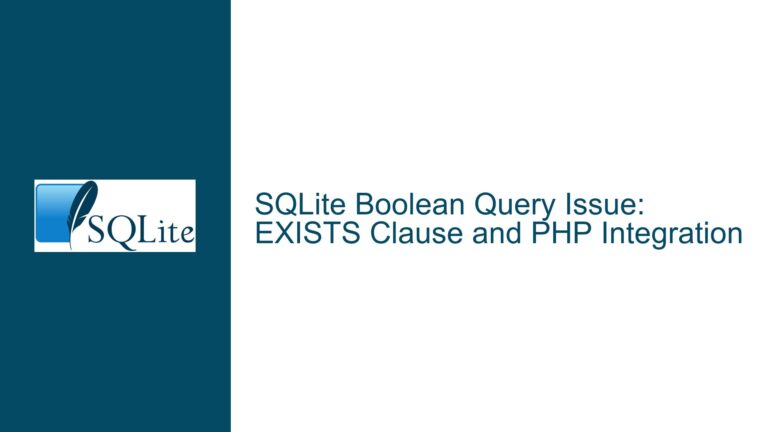SQLite 3.34.0 FTS5 Index Corruption During DELETE Operations
SQLite 3.34.0 FTS5 Index Corruption During DELETE Operations
The issue at hand revolves around SQLite 3.34.0 causing database corruption when executing DELETE operations on FTS5 (Full-Text Search) indexes. This corruption manifests as a "database disk image is malformed" error, specifically when the sqlite3_step function returns SQLITE_CORRUPT. The problem was identified during the execution of the GNOME Tracker 3 test suite, which passed without issues on SQLite 3.33.0 but failed consistently on SQLite 3.34.0. The error occurs during an INSERT operation that involves a SELECT statement targeting an FTS5 index, where the SELECT statement includes a DELETE command.
The core of the problem lies in the interaction between the FTS5 index and the DELETE operation. The FTS5 index is a specialized virtual table in SQLite designed for full-text search, and it maintains its own internal data structures to facilitate fast text searches. When a DELETE operation is executed on a row that is referenced by an FTS5 index, SQLite must ensure that the index is updated correctly to reflect the deletion. However, in SQLite 3.34.0, a bug was introduced that causes the FTS5 index to become corrupted when certain DELETE operations are performed. This bug was introduced in commit 86f477edaa17767b39c7bae5b67cac8580f7a8c1, which aimed to catch FTS5 index corruption caused by issuing DELETE commands with incorrect data earlier in some cases.
The corruption occurs because the DELETE operation does not correctly update the FTS5 index, leading to inconsistencies between the index and the actual data in the database. This inconsistency is detected by SQLite’s integrity checks, resulting in the "database disk image is malformed" error. The issue is particularly problematic because it only manifests under specific conditions, making it difficult to diagnose without a detailed understanding of both the FTS5 index and the DELETE operation.
FTS5 Index Corruption Due to Incorrect DELETE Command Handling
The root cause of the issue lies in the way SQLite 3.34.0 handles DELETE commands that affect FTS5 indexes. The FTS5 index is a complex data structure that must be carefully maintained to ensure consistency with the underlying data. When a DELETE operation is executed, SQLite must update the FTS5 index to remove references to the deleted row. However, in SQLite 3.34.0, a bug was introduced that causes the FTS5 index to be updated incorrectly in certain cases.
The bug was introduced in commit 86f477edaa17767b39c7bae5b67cac8580f7a8c1, which was intended to catch FTS5 index corruption caused by issuing DELETE commands with incorrect data earlier in some cases. However, this commit inadvertently introduced a new issue where the FTS5 index could become corrupted when certain DELETE operations were performed. The corruption occurs because the DELETE operation does not correctly update the FTS5 index, leading to inconsistencies between the index and the actual data in the database.
The issue is particularly problematic because it only manifests under specific conditions. Specifically, the corruption occurs when a DELETE operation is performed on a row that is referenced by an FTS5 index, and the DELETE operation is part of a larger transaction that involves multiple operations on the FTS5 index. In these cases, the FTS5 index may not be updated correctly, leading to inconsistencies that are detected by SQLite’s integrity checks.
The corruption is detected by SQLite’s integrity checks, which are designed to ensure that the database remains consistent. When SQLite detects an inconsistency, it returns the SQLITE_CORRUPT error code, indicating that the database is in an inconsistent state. This error is then propagated to the application, which may handle it in various ways. In the case of the GNOME Tracker 3 test suite, the error causes the test to fail, as the application is not designed to handle database corruption.
Implementing PRAGMA journal_mode and Database Backup Strategies
To address the issue of FTS5 index corruption during DELETE operations, several strategies can be employed. The first and most immediate solution is to apply the patch provided by the GNOME Tracker team, which addresses the specific issue with SQLite 3.34.0. This patch modifies the way DELETE operations are handled, ensuring that the FTS5 index is updated correctly and preventing the corruption from occurring.
In addition to applying the patch, it is also important to implement robust database backup and recovery strategies to minimize the impact of any potential corruption. One effective strategy is to use SQLite’s PRAGMA journal_mode setting to enable Write-Ahead Logging (WAL). WAL mode provides several advantages, including improved concurrency and better crash recovery. When WAL mode is enabled, SQLite writes changes to a separate WAL file before applying them to the main database file. This allows SQLite to recover more easily from crashes and reduces the risk of database corruption.
To enable WAL mode, the following command can be executed:
PRAGMA journal_mode=WAL;
In addition to enabling WAL mode, it is also important to regularly back up the database. SQLite provides several methods for backing up databases, including the sqlite3_backup API and the .backup command in the SQLite shell. Regular backups ensure that, in the event of corruption, a recent copy of the database is available for recovery.
Another strategy is to use SQLite’s integrity check feature to detect and address corruption issues before they become critical. The PRAGMA integrity_check command can be used to verify the integrity of the database. This command checks the database for inconsistencies and reports any issues that are found. If corruption is detected, the database can be repaired using the .dump and .read commands in the SQLite shell. These commands allow the database to be exported to a text file and then re-imported, which can often resolve corruption issues.
Finally, it is important to monitor the database for signs of corruption and to address any issues as soon as they are detected. This can be done by regularly running the PRAGMA integrity_check command and by monitoring the database for errors. If corruption is detected, it is important to investigate the cause and to implement measures to prevent it from occurring in the future.
In conclusion, the issue of FTS5 index corruption during DELETE operations in SQLite 3.34.0 can be addressed by applying the patch provided by the GNOME Tracker team, enabling WAL mode, implementing robust backup and recovery strategies, and regularly monitoring the database for signs of corruption. By taking these steps, the risk of database corruption can be minimized, and the impact of any corruption that does occur can be mitigated.






